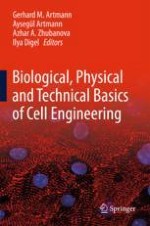2018 | OriginalPaper | Buchkapitel
Stem Cells: Cellular and Extracellular Requirements for Generation and Use
verfasst von : Gerd Bungartz, Kathryn Bungartz
Erschienen in: Biological, Physical and Technical Basics of Cell Engineering
Verlag: Springer Singapore
Aktivieren Sie unsere intelligente Suche, um passende Fachinhalte oder Patente zu finden.
Wählen Sie Textabschnitte aus um mit Künstlicher Intelligenz passenden Patente zu finden. powered by
Markieren Sie Textabschnitte, um KI-gestützt weitere passende Inhalte zu finden. powered by
